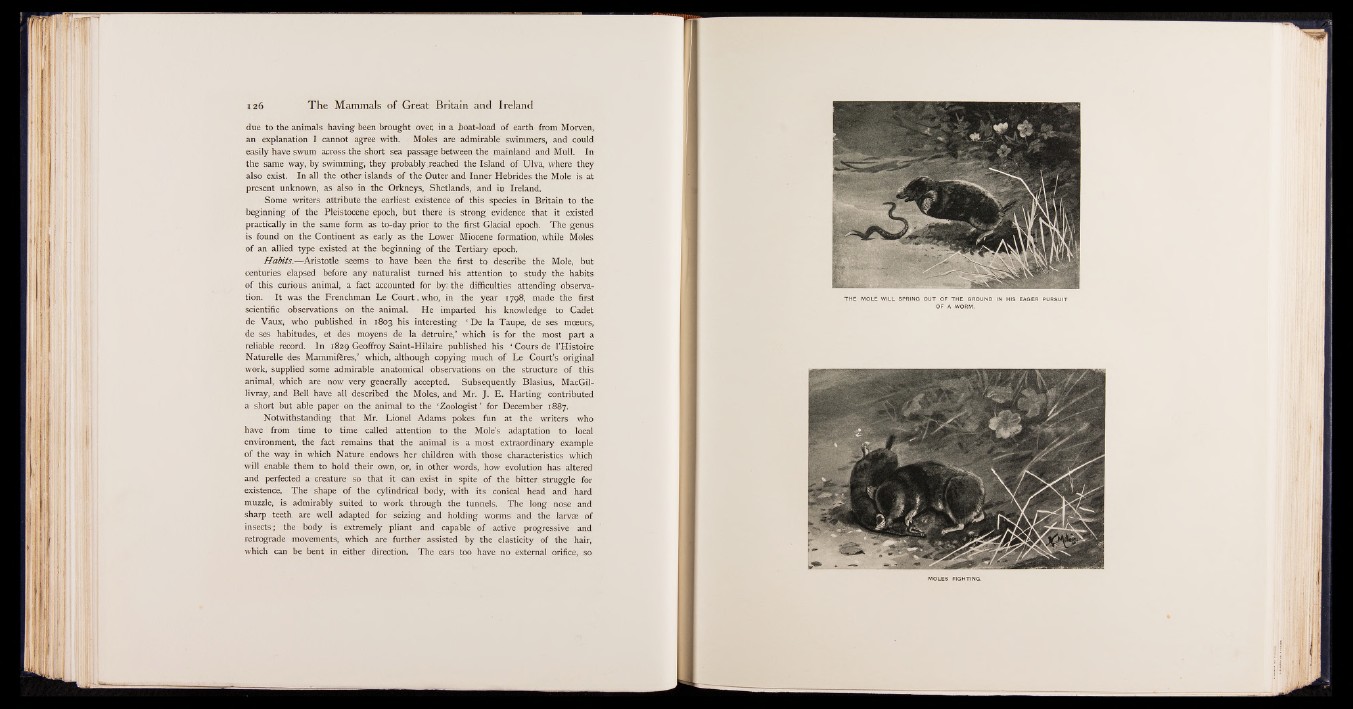
due to the animals having been brought ovet in a boat-load of earth from Morven,
an explanation I cannot agree with. Moles are admirable swimmers, and could
easily have swum across the short sea passage between the mainland and Mull. In
the same way, by swimming, they probably reached the Island of Ulva, where they
also exist. In all the other islands of the Outer and Inner Hebrides the Mole is at
present unknown, as also in the Orkneys, Shetlands, and in Ireland.
Some writers attribute the earliest existence of this species in Britain to the
beginning of the Pleistocene epoch, but there is strong evidence that it existed
practically in the same form as to-day prior to the first Glacial epoch. The genus
is found on the Continent as early as the Lower Miocene formation, while Moles
of an allied type existed at the beginning of the Tertiary epoch.
Habits.— Aristotle seems to have been the first to describe the Mole, but
centuries elapsed before any naturalist turned his attention to study the habits
of this curious animal, a fact accounted for by] the difficulties attending observation.
It was the Frenchman Le Court.who, in the year 1798, made the first
scientific observations on the animal. He imparted his knowledge to Cadet
de Vaux, who published in 1803 his interesting ‘ De la Taupe, de ses moeurs,
de ses habitudes, et des moyens de la détruire,' which is for the most part a
reliable record. In 1829 Geoffroy Saint-Hilaire published his ‘ Cours de l’Histoire
Naturelle des Mammifères,' which, although copying much of Le Court’s original
work, supplied some admirable anatomical observations on the structure of this
animal, which are now very generally accepted. Subsequently Blasius, MacGil-
livray, and Bell have all described the Moles, and Mr. J. E. Harting contributed
a short but able paper on the animal to the ‘Zoologist’ for December 1887.
Notwithstanding that Mr. Lionel Adams pokes fun at the writers who
have from time to time called attention to the Mole’s adaptation to local
environment, the fact remains that the animal is a most extraordinary example
of the way in which Nature endows her children with those characteristics which
will enable them to hold their own, or, in other words, how evolution has altered
and perfected a creature so that it can exist in spite of the bitter struggle for
existence. The shape of the cylindrical body, with its conical head and hard
muzzle, is admirably suited to work through the tunnels. The long nose and
sharp teeth are well adapted for seizing and holding worms and the larvae of
insects ; the body is extremely pliant and capable of active progressive and
retrograde movements, which are further assisted by the elasticity of the hair,
which can be bent in either direction. The ears too have no external orifice, so